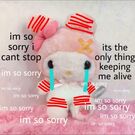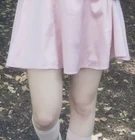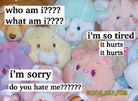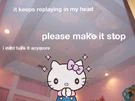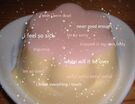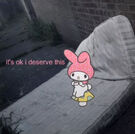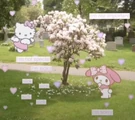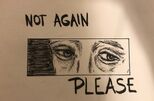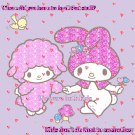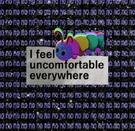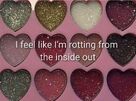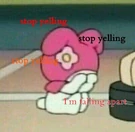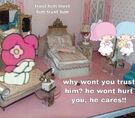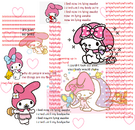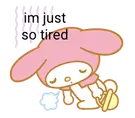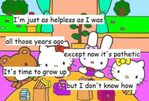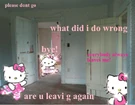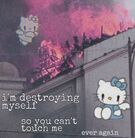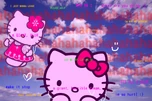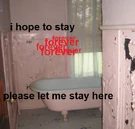No edit summary Tag: Visual edit |
No edit summary Tag: Visual edit |
||
| Line 5: | Line 5: | ||
|image1 = [[File:F9E917B2-C7FB-4F73-BB6F-08D56491BE7A.jpeg]] |
|image1 = [[File:F9E917B2-C7FB-4F73-BB6F-08D56491BE7A.jpeg]] |
||
|other_names = Usedcore, Emptycore, Sadcore |
|other_names = Usedcore, Emptycore, Sadcore |
||
| − | |key_motifs = Childhood, religion, dolls, angels, blood, dirt, nostalgia, rot and mold, death, guts, innocence |
+ | |key_motifs = Childhood, religion, dolls, angels, blood, dirt, nostalgia, rot and mold, death, guts, innocence, abandonment |
|key_colours = Pastel colors (particularly pink), white, grey, red |
|key_colours = Pastel colors (particularly pink), white, grey, red |
||
|related_aesthetics = [[Liminal Space]]<br>[[Lostcore]]<br>[[Sadpeople]]<br>[[Sanriocore]]<br>[[Voidpunk]]<br>[[Weirdcore]]<br>[[YamiKawaii]]<br>[[Kidcore]] |
|related_aesthetics = [[Liminal Space]]<br>[[Lostcore]]<br>[[Sadpeople]]<br>[[Sanriocore]]<br>[[Voidpunk]]<br>[[Weirdcore]]<br>[[YamiKawaii]]<br>[[Kidcore]] |
||
Revision as of 19:49, 9 January 2021
Trigger Warning: This article has a focus on the very sensitive topics of abuse and PTSD. If this sort of content has the potential to be triggering to you, please turn back from this page and go to another page. Viewer discretion is advised.
Traumacore is a type of imagery that delves into the themes of abuse and trauma (particularly sexual trauma or CSA). But it's not strictly limited to physical or sexual abuse. Mental, emotional, and spiritual abuse are also common themes as it pertains to Traumacore. It often draws heavily on childlike and angelic themes done so as a means to try and reclaim their innocence. Many people turn to these images to help them cope with the pain they suffered in the past. While traumacore isn't inherently an aesthetic, many of the images used in its photo or video edits come from other aesthetics. Traumacore is more of a type of art therapy or visual journaling.
Traumacore often intersects with Weirdcore. Weirdcore is an aesthetic focused on motifs considered jarring or bizarre.
It is frowned upon to participate in traumacore if you are not a survivor of some kind of trauma yourself, as it is considered fetishization of a very serious issue. Trauma consumes many people's lives. Traumacore can be of use as a coping mechanism for those who need it. However, like any kind of coping mechanism, it should not be a stand-in for proper treatment, like therapy or medication.
Many traumacore edits have negative words or phrases in them (ex: "I am broken", "I will never be clean", "you used me", "rotten child", "please stop", "you ruined me"), but that does not mean that the creator is encouraging others to feel this way. Instead, it is only a reflection of how the creator feels about themselves. Having a way of getting these thoughts out onto a screen or paper can be helpful, as it puts feelings into a visual form that is easier to understand.
Visuals
Traumacore draws upon a delicate, childlike but implicitly disturbing aesthetic, and aims to blend the unsettling with the innocent. Dolls, angels, bedrooms, and corpses are common motifs used.
There is often a contrast between the imagery and the text in a traumacore visual (for example, one might put a disturbing message under a photo of a porcelain doll or a children's cartoon).
Many of those who enjoy traumacore are also fond of the "rotting aesthetic": imagery of bugs, dirt, and mold are often incorporated to represent this theme. It is also common for traumacore aesthetics to reference religious themes (such as crosses, angels, and mentions of Heaven or Hell).
Traumacore aesthetics are generally soft or girlish, though this is not always the case (for example, male followers of traumacore tend to employ more masculine colors and themes).
Many traumacore edits also include nostalgic imagery, as people's trauma happens very often during childhood. Some examples of this are Sanrio characters (like Hello Kitty), children's bedrooms, playgrounds, and other places and things relevant to childhood.
Happeycore is the supporting version of this aesthetic. It uses images to help one cope.
Fashion
Traumacore fashion is often soft and angelic and has a heavy focus on bringing attention to mental health issues or an inherent sadness that lies within the wearer.
Traumacore Vendors
Music
Traumacore Artists
- Nicole Dollanganger ("Mean", "Dog Teeth", "Angels of Porn", "Uncle", "Ghosts", "Valley of the Dead" )
- Lana del Rey ("Carmen", "1949", "Ultraviolence")
- Marina and the Diamonds ("Teen Idle", "Living Dead", "Valley of the Dolls")
- Alice Glass ("I Trusted You")
- Jazmin Bean ("Hello Kitty")
- The Neighborhood ("Daddy Issues")
- Joji ("Pills")
- Shiloh Dynasty ("Father Forgive Me")
- Allie X ("Bitch")
- Weathers ("Happy Pills")
- Kero Kero Bonito ("I'd rather sleep")
- Lincoln (" Saint Bernard")
- Jack Stauber ("Bumblebees Are Out")
- Possibly In Michigan ("Animal Cannibal")
- girl in red ("summer depression")
- Blank Banshee ("Teen Pregnancy")
- Korn ("Daddy")
Traumacore Playlists
- traumacore Spotify playlist by ranfrenz
- traumacore 🍓☁️✨ Spotify playlist by 🌸 wren 🌸
- salt burns the wound Spotify playlist by ☆
- TRAUMACORE Spotify playlist by b⚰️
- hello kitty traumacore<3 Spotify playlist by mehwish :)
- you stole everything from me Spotify playlist by plasticspiders
- mmmmmmmmm Spotify playlist by battery
- emptycore 💀✨ Spotify playlist by hamomg
- my traumacore >:3 Spotify playlist by emil
- traumacore baby Spotify playlist by Libitina
- traumacore Spotify playlist by urszvlia
- traumacore. Spotify playlist by SKULLY
Traumacore Activities
- Venting and/or having a blog dedicated to coping with your traumas
- Making disturbing aesthetics or visuals
- Collecting dolls, stuffed animals or other childlike trinkets
- Writing sad poetry
- Baking or cooking, particularly sweet things
- Playing the piano or flute
- Painting, drawing or any other form of creating expression (particularly as a venting device)
- Ballet dancing
- Growing flowers in your garden
- Consuming media or playing games targeted at children
Media Characters
- Rika ("Mystic Messenger")
Gallery

